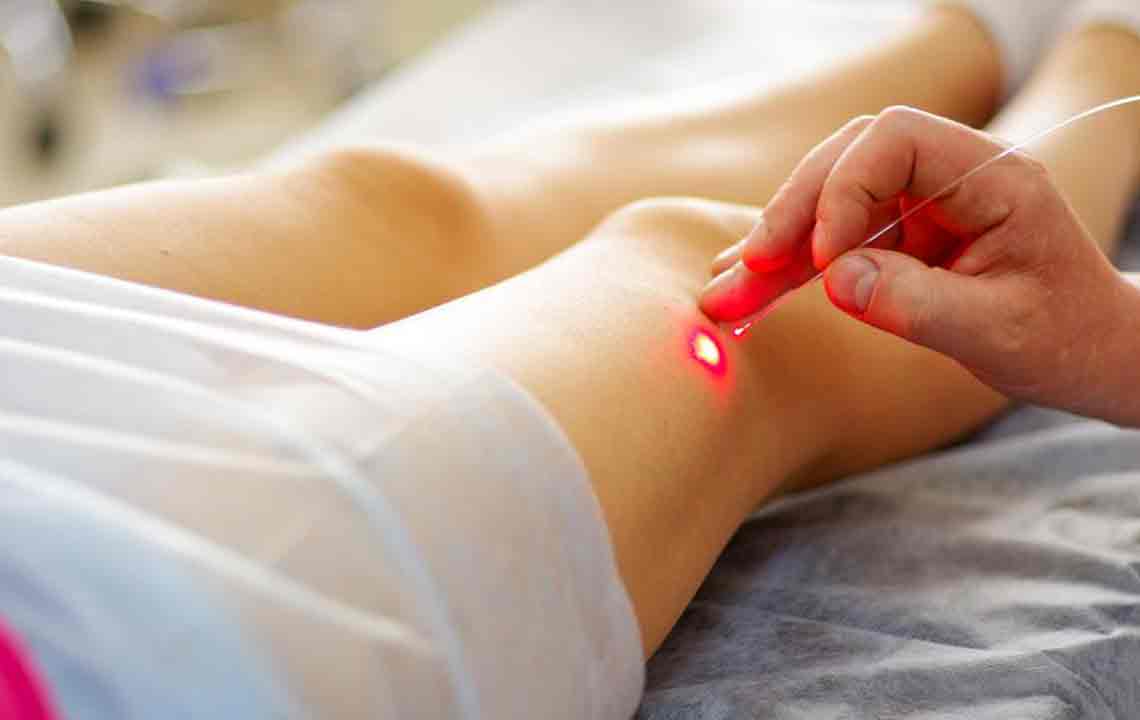Treatment Methods for Varicose Veins
Varicose veins are the veins that get enlarged, become twisted, and appear purple or red in color. The outer veins in the lower legs are usually affected by this condition; they experience the most pressure when we stand.
Varicose veins occur when veins stop functioning properly.
There are valves in the veins that facilitate the flow of blood back towards the heart. When these valves fail, blood flows back and gets collected in the veins.

Varicose veins treatment
Varicose veins are mostly benign and may not even cause any physical discomfort. Some sufferers experience debilitating pain and, in severe cases, an actual swelling of the legs. Very rarely does this condition warrant a surgery.
You can take the following measures for the treatment of varicose veins:
- Lifestyle changes
Make some changes in your daily activity to prevent the occurrence of varicosities (varicose veins) and to stop the condition from getting aggravated. Do not stand or sit in one place for too long as it puts a lot of pressure on the veins. This is the main cause of varicosities. Shed some weight as it helps relieve the pressure on the veins. Stay active through regular exercises to improve blood circulation. - Leg elevation and exercises
Keep your legs elevated for some time after walks, or after standing for a while. Elevation enables the return of blood to the heart. - Anti-inflammatory medications
Painkillers help relieve your pain and double up as a blood-thinning agent, enabling circulation. These medications must be taken under the careful supervision of a physician. - Vein stripping
About 90% of the blood in the legs is circulated back to the heart by deep veins. Surface veins, which are affected by varicosities, can be removed or sealed without serious impact. Vein stripping involves the surgical removal of the whole tract of the affected veins from the body. This is the oldest and the most popular treatment for varicose veins. However, this method sees a recurrence of varicose veins in other parts in up to 60% of cases. - Ambulatory phlebectomy
This is a slightly more invasive technique wherein incisions are made over affected veins and varicose parts are removed. Unlike vein stripping, this method does not require the removal of entire vein tracts. - Compression
Wearing compression socks or stockings puts enough pressure on the affected areas to enable the proper flow of blood back to the heart. They can also decrease swelling. - Sclerotherapy
Another treatment for varicose veins is to close them by damaging the inner lining of the veins. In sclerotherapy, a special chemical is injected into the affected veins to close it off. This process takes around 5 to 30 minutes, depending upon the number and size of affected veins.
During the process, the leg is elevated to ensure that blood moves out of the area before administering the injection. After closing the veins, you will need to wear compression stockings for a few days to ensure that blood does not flow back into the veins. In cases of larger varicose veins, a foam solution is used to seal the veins. This method is called foam scleropathy. - Vein Ligation
This technique, which is similar to sclerotherapy, relies on tying off the affected veins. However, instead of using injections to achieve the effect, veins are tied using sutures. - Cryosurgery
This is a new technique in which the veins are injected with carbon dioxide or nitrogen dioxide. This causes the veins to freeze, after which they are removed. Cryosurgery requires less incision than vein stripping. One side effect of this procedure is that the surrounding area may get affected by the cold. - Laser treatment
Short spurts of Laser rays are used to vaporize varicose veins. This is most effective for smaller surface veins. Laser therapy needs no incision or injections. - Endovenous laser treatment
In this type of treatment for varicose veins, a catheter is inserted into the vein and fiber laser is passed through it. The laser is used to heat the catheter, which is then pulled out of the vein. The heat from the catheter seals the vein by destroying its walls. This treatment for varicose veins is done for larger veins which cannot be closed by simpler laser treatment for varicose veins. Laser treatment is much less painful than ligation and stripping; recovery time is also much faster. Doctors advise you to wear compression stockings for up to a week after the procedure to ensure that the veins stay closed.